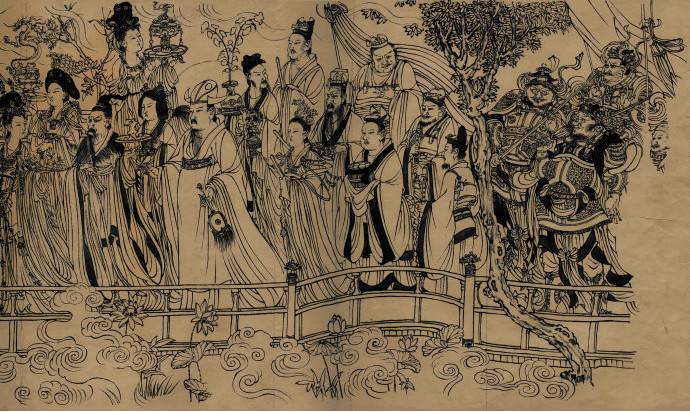Wu Daozi Painter’s death a tall tale
3 min readWu Daozi was an undisputed great artist of the Tang Dynasty(618-907 AD)and one of the greatest of all Chinese artists.He was best known for his unrestrained style and superb skills.He painted more than 300 stunning murals during his lifetime.No wonder he has been revered as a”Sage of Art”in China in the past 1,400 years.
Wu lost his parents when he was very young and he spent his childhood in abject poverty.In order to make a living,Wu began to learn painting and engraving not from great masters at that time, but from ordinary folk artisans in today’s He’ nan Province in central China.
The young Wu worked very hard and studied assiduously.
It was said that in order to learn how to paint streams and rivers, he followed a monk who was a master painter of natural scenes and traveled to numerous places to observe and make sketches of flowing water, rolling waves and sparkling water drops. After three years, Wu mastered the skill and later hecreated the so-called shuti or “sketchy”style of landscape painting.

In addition, he later became the first artist in Chinese art history to turn landscapes into a new genre of painting. Before, Chinese painters painted landscapes only as backgrounds in figure paintings.
Apart from landscapes, Wu also learned the superb skills of painting human figures. He was exceptionally good at de-picting the features of human beings and created his own tech-niques in painting fabrics and creases of clothes.
It was said the ribbons painted by Wu were so light and flowing that by looking at his painting, one could almost feel the breeze. His technique in fabric painting was later named as “Wu’s Breeze.”
By the age of 20, Wu had already earned fame as a pro-fessional artist with peerless talent. Soon afterwards, he was hired by the emperor as an official painter of the imperial court.
The new title restricted Wu’s freedom in creation as he could only paint according to the emperor’s orders, but it alsoprovided him the opportunity to mingle with other top artists, calligraphers and men of letters. Also, he could travel to many places with the emperor.
One day, sitting in the court, Emperor Xuanzong sudden-ly thought of the beautiful landscape of the Jialing River in today’s Sichuan Province in southwest China. So, he ordered Wu to visit the place by himself and after returning to the capi-tal, to paint the landscape on a wall in one of the imperial halls so that the emperor could see the scene whenever he wanted.
Wu spent weeks touring along the river and came back empty handed. The emperor asked Wu to show him his sketches, but Wu said they were all in his heart.
Wu used only one day to paint the landscape on the wall depicting the 300-kilometer-long scenery along the river.
When it was finished, the emperor was awed by the brilliant painting. Wu said that when he was touring along the river, he didn’t try to remember the details of a mountain or river. In-stead, he tried very hard to feel the sensation of the beautiful scenes there.
Wu’s death was a myth. One story says that after painting a mural about a natural scene in the palace one day, Wu drew a door on the mural in the side of a hill. Then he clapped his hands and the door opened. After entering, Wu invited the emperor to follow. But the door suddenly shut, he disappeared inside his own painting and was never seen again.








